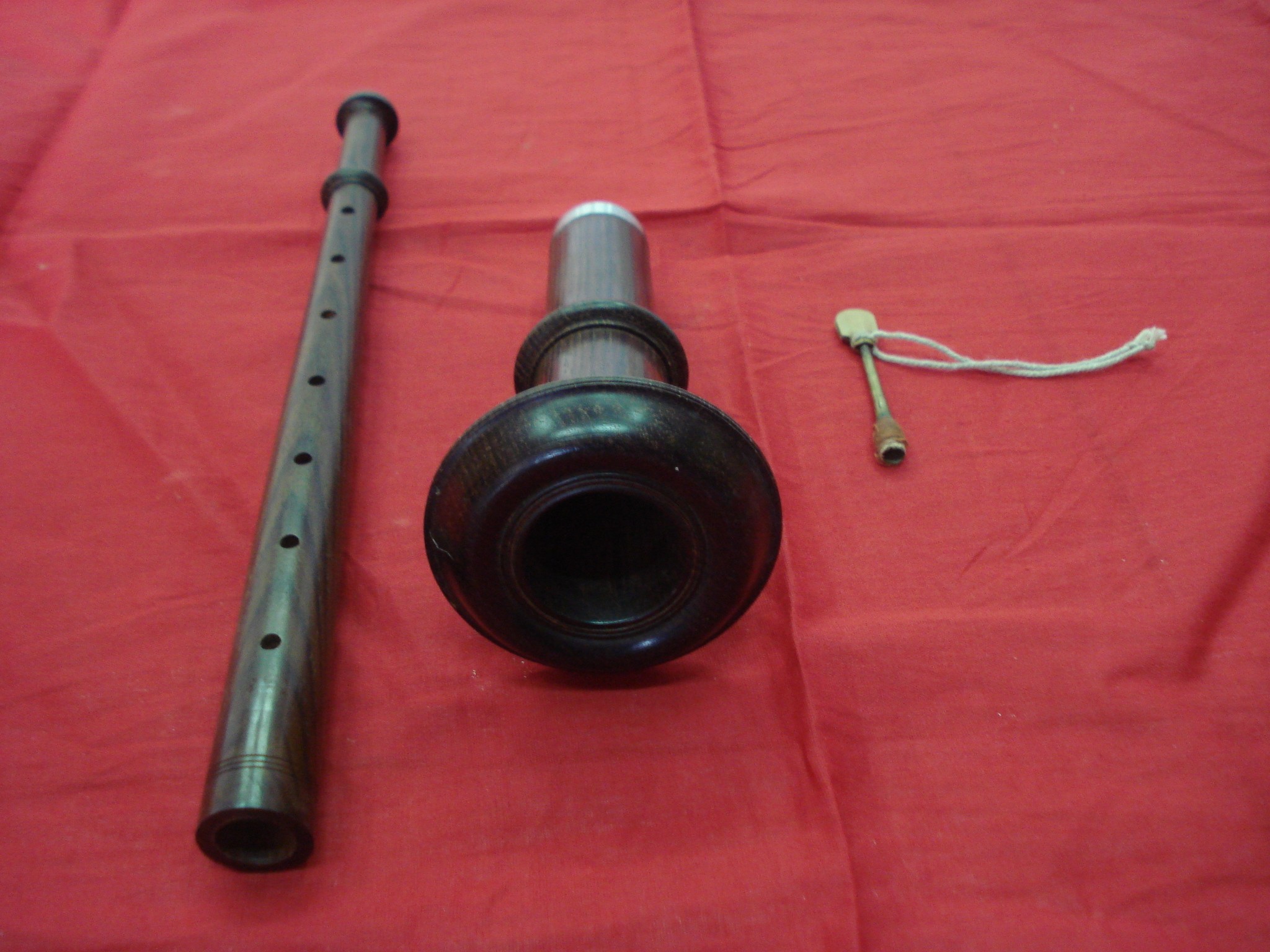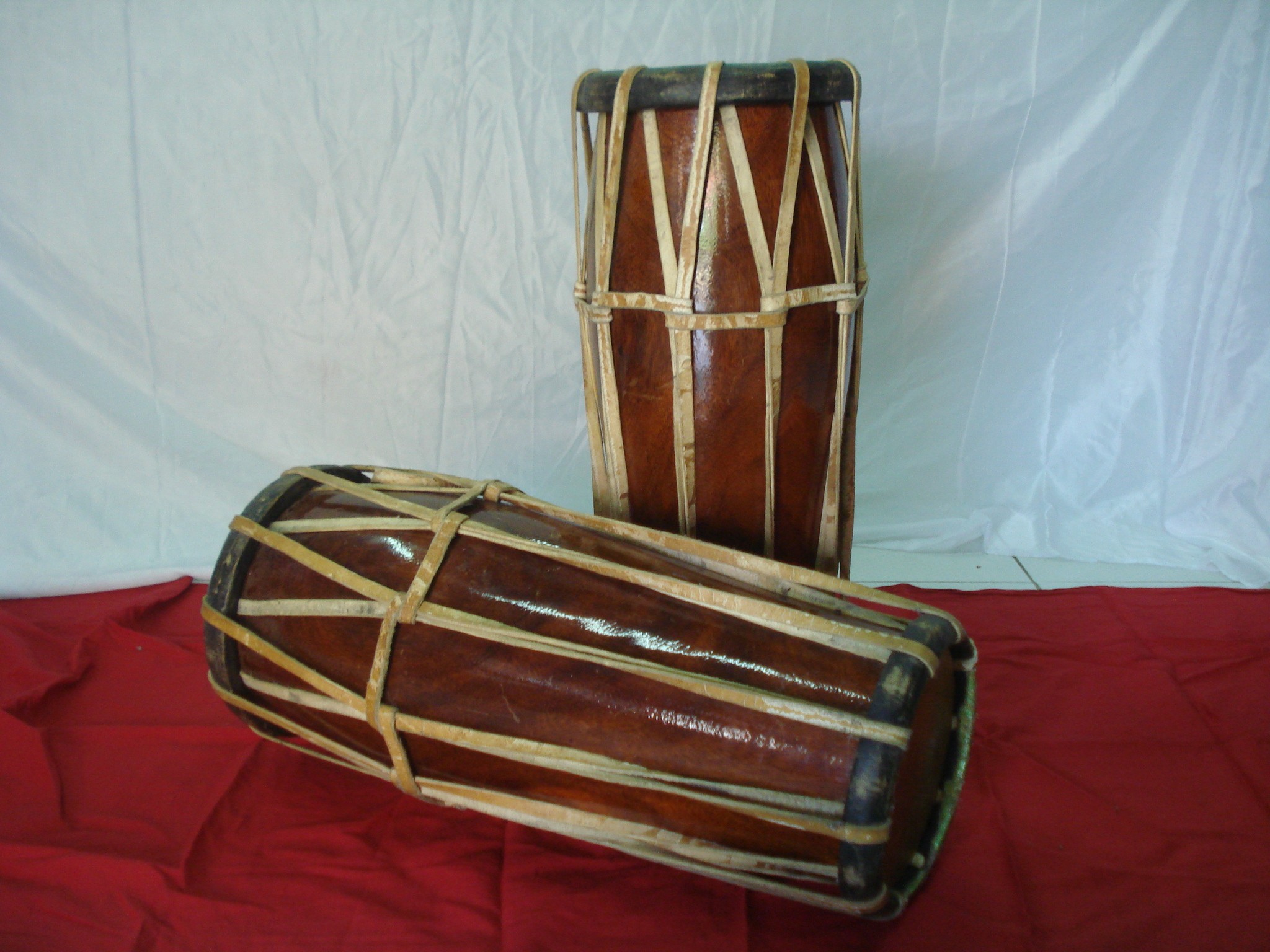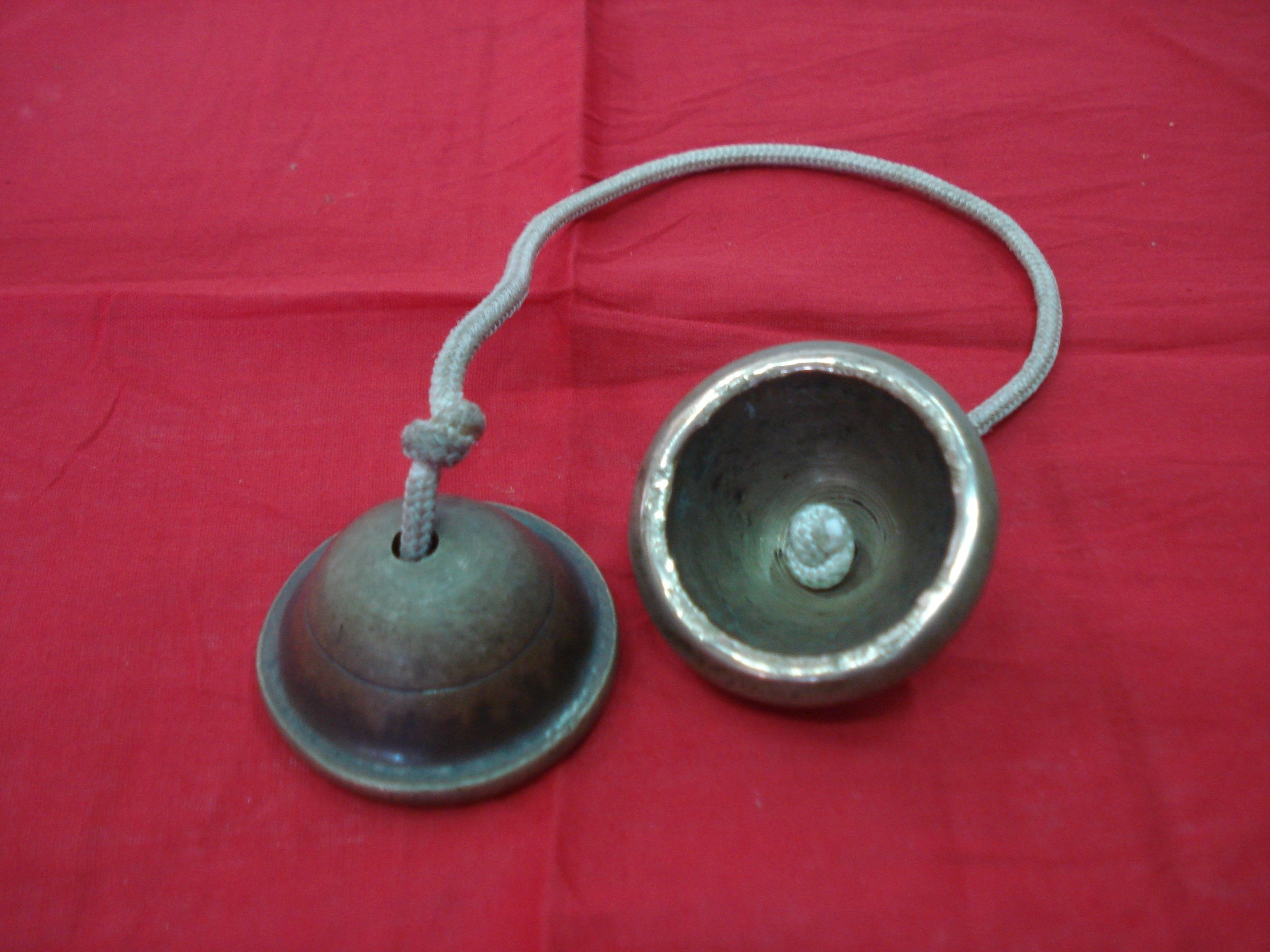
ดนตรีปี่มวย
ดนตรีปี่มวยเป็นเอกลักษณ์ที่โดดเด่นของกีฬามวยไทย โดยในระหว่างการร่ายรำไหว้ครูมวยไทยและการต่อสู้จะมีเสียงดนตรีบรรเลงขึ้นโดยมีจุดมุ่งหมายเพื่อให้เกิดจังหวะแก่นักมวย ซึ่งมีท่วงทำนองช้าหรือเร็ว ตามช่วงเวลาของการแข่งขัน เมื่อเริ่มไหว้ครูท่วงทำนองก็จะช้า ช่วยให้ลีลาในการร่ายรำไหว้ครูดูอ่อนช้อยงดงามเป็นจังหวะน่าชมและเมื่อเริ่มทำการแข่งขันเสียงดนตรีก็เริ่มมีจังหวะเร็วขึ้น บอกให้ผู้ชมได้รู้ว่านักมวยกำลังใช้ชั้นเชิงต่อสู้กันบนเวที และเมื่อถึงยกสุดท้ายจังหวะดนตรีก็เริ่มมีจังหวะเร่งเร้าขึ้น เพื่อให้นักมวยได้เร่งจังหวะและพยายามเอาชนะคู่ต่อสู้ให้ได้ ซึ่งทำให้ผู้ชมได้รับความสนุกสนานและตื่นเต้นกับการแข่งขันตลอดเวลา
เครื่องดนตรีที่นำมาบรรเลงประกอบการแข่งขันมวยไทย มีชื่อเรียกว่า “วงปี่กลอง” ซึ่งมีนักดนตรีร่วมบรรเลงดนตรีโดยทั่วไปจำนวน ๔ คน โดยเครื่องดนตรีประกอบในวงปี่กลองประกอบ ๓ ชนิด (ธนิต อยู่โพธิ์, ๒๕๓๐) ได้แก่
๑. ปี่ชวา
เป็นเครื่องดนตรีประเภทเป่าลมชนิดหนึ่งที่ใช้ลิ้น โดยได้แบบมาจากชวา ตัวปี่หรือเลาปี่ มักทำด้วยไม้แก่น เช่น ไม้ชิงชัน ไม้พะยูง มีป่องตรงกลาง หัวท้ายบานออกเล็กน้อย ภายในเลาปี่เจาะรูกลวง ตลอดตั้งแต่หัวจดท้าย มีความยาวประมาณ ๓๘-๓๙ เซนติเมตร
เป็นเครื่องดนตรีประเภทตีที่มีรูปร่างยาวเป็นรูปทรงกระบอก ขึ้นหนังสองข้างด้วยหนังลูกวัวหรือหนังแพะหน้าใหญ่ กว้างประมาณ ๒๐ เซนติเมตร ส่วนหน้าใหญ่ เรียกว่า “หน้าลุ่ย” ส่วนหน้าเล็ก กว้างประมาณ ๑๗ เซนติเมตร เรียกว่า “หน้าต่าน” ตัวกลองแขกทำด้วยไม้แก่น เช่น ไม้ชิงชัน โดยการขึ้นหนังใช้เส้นหวายผ่าซีกเป็นสายโยงเร่งเสียง โยงเส้นห่าง ๆ ในปัจจุบันอาจใช้เส้นหนังแทนเนื่องจากหาหวายได้ยาก กลองแขกจะมี ๒ ลูก ได้แก่ ลูกเสียงสูงเรียกว่า “ตัวผู้” ลูกเสียงต่ำเรียกว่า “ตัวเมีย” ตีด้วยฝ่ามือ ทั้งสองข้างให้สอดสลับกันทั้งสองลูก ซึ่งบางครั้งจะเรียกว่า “กลองชวา”
๓. ฉิ่ง
เป็นเครื่องดนตรีประเภทตี ทำด้วยโลหะ หล่อหนา เว้ากลาง ปากผายกลม รูปคล้ายถ้วยชาไม่มีก้น สำรับหนึ่งมี ๒ ฝา เจาะรูตรงกลางสำหรับร้อยเชือก เพื่อให้จับสะดวกขณะตีกระทบกันให้เกิดเสียง ฉิ่งแบ่งออกเป็น ๒ ชนิด คือ ฉิ่งสำหรับวงปี่พาทย์ และฉิ่งที่ใช้สำหรับวงเครื่องสายและวงมโหรี
ในการบรรเลงดนตรีประกอบกีฬามวยไทยนั้น จะมีลักษณะคล้ายกับการบรรเลงประกอบกีฬากระบี่กระบอง เนื่องจากเป็นวงดนตรีประเภท “วงปี่กลอง” เหมือนกัน ซึ่งเพลงที่นิยมขณะบรรเลงประกอบการร่ายรำไหว้ครูมวยไทย คือ เพลงสะระหม่า ส่วนเพลงที่นิยมบรรเลงประกอบการแข่งขัน คือ เพลงแขกเจ้าเซ็น นอกจากนี้ยังมีการพลิกแพลงเป่าเพลงอื่น ๆ ตอนใกล้จะหมดเวลาการแข่งขัน ซึ่งจะใช้เพลงเชิดยั่วเย้าให้นักมวยเร่งจังหวะเข้าต่อสู้จนถึงวินาทีสุดท้าย
สรุปท้ายบท
ดนตรีปี่มวยเป็นเอกลักษณ์อย่างหนึ่งในกีฬามวยไทยที่แตกต่างจากกีฬาประเภทอื่นอย่างเด่นชัด ทำให้นักมวยมีจังหวะในการร่ายรำไหว้ครูมวยไทยที่อ่อนช้อยงดงาม และหากจังหวะเร็วขึ้นจะแสดงว่า นักมวยกำลังใช้ชั้นเชิงต่อสู้กันบนเวที เพื่อพยายามเอาชนะคู่ต่อสู้ให้ได้ ซึ่งทำให้ผู้ชมได้รับความสนุกสนานและตื่นเต้นกับการแข่งขัน โดยใช้วงปี่กลองซึ่งประกอบด้วยนักดนตรีร่วมบรรเลง จำนวน ๔ คน และเครื่องดนตรี จำนวน ๓ ชนิด ได้แก่ ปี่ชวา กลองแขก และฉิ่ง


ภาพปี่ชวา
ที่มา : ต่อศักดิ์ แก้วจรัสวิไล, ๒๕๕๑
 ภาพที่ ๒ กลองแขก
ภาพที่ ๒ กลองแขก
ที่มา : ต่อศักดิ์ แก้วจรัสวิไล, ๒๕๕๑
 ภาพที่ ๓ ฉิ่ง
ภาพที่ ๓ ฉิ่ง
ที่มา : ต่อศักดิ์ แก้วจรัสวิไล, ๒๕๕๑
Pi Muay Music
Pi Muay music is one of the distinctive elements of Muay Thai. During the Wai Khru Ram Muay ritual and the actual fight, traditional music is played with the purpose of providing rhythm and pacing for the boxers. The tempo of the music changes throughout the match, depending on the context. When the Wai Khru ritual begins, the music starts with a slow and graceful rhythm, enhancing the elegance and flow of the ritual dance. Once the match commences, the tempo accelerates, signaling to the audience that the fighters are now engaging in combat using their techniques. In the final round, the rhythm intensifies even further, encouraging the fighters to increase their efforts in order to win. This dynamic use of music adds to the excitement and enjoyment of the spectators throughout the bout.
The musical ensemble used to accompany a Muay Thai match is called the "Wong Pi Klong" (วงปี่กลอง). Typically, four musicians perform together, playing three main types of instruments (Thanit Yupho, 1987), as follows:
1. Pi Chawa (ปี่ชวา)
The Pi Chawa is a type of reed wind instrument adapted from Javanese musical traditions. The body of the pipe is typically made from hardwood, such as Dalbergia cochinchinensis (Siamese rosewood) or Dalbergia oliveri, and has a slightly flared bell at each end with a bulge in the center. The internal bore of the pipe is hollowed from end to end. The instrument measures approximately 38–39 centimeters in length.
2. Klong Kaek (กลองแขก)
The Klong Kaek is a percussion instrument with a long cylindrical shape. Both drumheads are covered with calfskin or goatskin. The larger head, approximately 20 centimeters in diameter, is called the "face luy", while the smaller head, about 17 centimeters in diameter, is known as the "face tan". The drum body is made from durable hardwood such as Siamese rosewood. The skins are tensioned using split rattan cords, although leather cords may also be used due to the scarcity of quality rattan. Two drums are used: the higher-pitched drum is referred to as the "male drum", and the lower-pitched drum as the "female drum". The drums are played alternately using both palms. Occasionally, the Klong Kaek is also referred to as "Klong Chawa".
3. Ching (ฉิ่ง)
The Ching is a type of idiophone made of thick-cast metal shaped like a shallow, bottomless teacup with a wide rim. A pair of Ching cymbals comprises a set, with each cymbal having a hole in the center for threading a cord to facilitate handling while striking them together to produce sound. There are two types of Ching: those used in Wong Piphat ensembles, and those used in string and Mahori ensembles.
Musical Repertoire and Context
The music played during Muay Thai competitions bears similarities to the music accompanying Krabi Krabong, as both employ the Wong Pi Klong ensemble. During the Wai Khru Ram Muay, the most commonly performed tune is Saramah, while the most popular tune used during actual combat is Khaek Chao Sen. Toward the end of the fight, variations may be introduced by playing Cherd melodies, which are more teasing and provocative in tone, prompting the boxers to increase their tempo and fight with greater intensity until the final moment.
Conclusion
Pi Muay music is a unique and integral component of Muay Thai, setting it apart from other sports. It provides a rhythmic framework for the graceful and reverent Wai Khru Ram Muay and signals the dynamic phases of combat when the tempo increases. This not only enhances the aesthetic value of the ritual and the tactical display on the ring but also adds excitement and engagement for the audience. The Wong Pi Klong ensemble, typically comprising four musicians, utilizes three traditional instruments: the Pi Chawa, Klong Kaek, and Ching.
